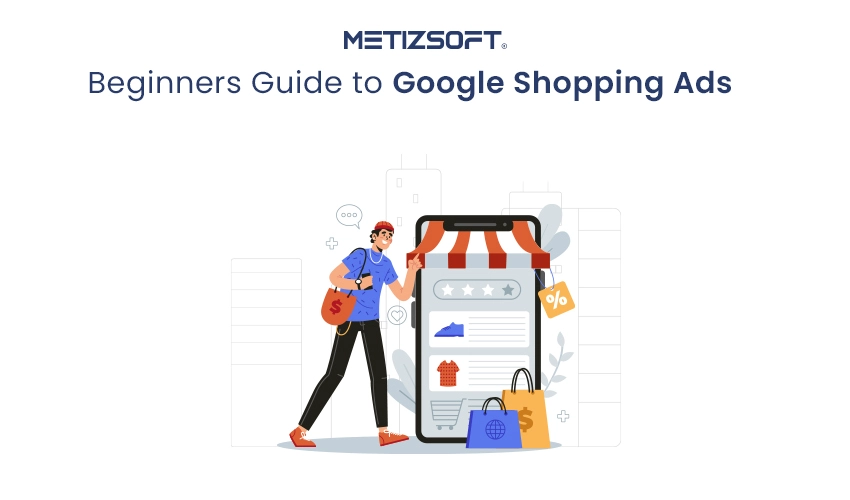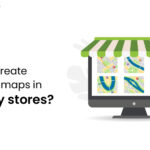
Since the marketplace digitalization has gained massive adoption amongst retailers and buyers, things have become easy for shoppers to shop for the best products by comparing various prospects such as price, reviews, quality of the products, and many more.
And to help shoppers get those product catalogues information at their fingertips, eCommerce store owners have started to implement effective paid shopping ads. As a result, Google shopping Ads have become the most preferable and primary paid advertising option for many retailers worldwide.
The retailers said that implementing Shopping Ads in their business advertising segment has helped them gain a decent return on ads spent on paid channels. According to a survey, retailers enjoy a whopping 60% of their paid clicks via Shopping Ads. No wonder the popularity and alignment of Shopping ads are at their peak presently!
The Shopping Ad was launched by Google in 2012 as a paid marketing channel, assuring more innovative advertising options, quick setup, and broader marketing reach. This blog will help you gather all the essential details of Google Shopping Ads – Its actual definition, setup procedure, and core benefits.
Table of Contents
What is Google Shopping Ads? – Definition Explained!
Have you ever searched for a product you want to buy in the Google search box, similar to the image below? Well, I am sure you must have. We all have done such things at least once, for sure.
For your information, the product ads relevant to your keyword at the top of Google search results are called Shopping Ads, also known as product listing ads or PLA.
However, the shopping ads don’t just appear on Google search results; you can see those product catalogue ads reference on youtube, Google display network, the Shopping tab, search partner websites, etc.
Due to the Shopping Ads’ high-end popularity and usage, Google continually expands its feature on shopping reach, ensuring more flexibility and advertisement opportunities for retailers and marketers.
Google Shopping Ad Set-up Procedure!
1. Create a Google Merchant Center Account
The Google Merchant Center Account is the starting point of your advertisement feed. In this account, you set your tax and shipping rules and all those important segments required before running your product shopping ads.
To set up your Google Merchant Account Centre, you need to:
Access to your domain register
First, you must verify that you have or own a domain name, and later you need to claim it for use in Merchant Center. The easy way to do this is by signing into your domain registrar and allowing Google to have access, and you can do all this directly from the Merchant Center Account.
Know your tax and shipping setting procedure
For sales tax, you can follow two methods. Either choose your rates directly or pick the states you charge sales tax in, allowing Google to determine the rate for you. In the shipping setting, you have two options in front of you. You can choose a flat rate (includes FREE shipping) or a rate based on a rate table or rules.
Assure smooth merchant centre link to Google Ads
To make a hassle-free merchant centre link to Google Ads, you need a 10-digit Google Ads ID. Once you get that ID, you need to be logged in with an email address with admin access to Merchant Center and Google Ads. You can do this under Settings and Ads by clicking Account Linking.
Note – If you haven’t opened any Google Accounts so far, we suggest you do it now and follow the above procedure accordingly.
2. Choose A Campaign Type
Performance Max Ads:
- First, you need to sign in to your Google Account
- Then, Click on the + New campaign button
- Now, Select the Sales objective
- Setup conversion goal
- Lastly, Select Performance Max
- Now, select the account to run ads in your preferred country or region you want to run ads.
Later, you need to choose a campaign name and hit the continue button. Once you do that, you will be directed to the builder section to enter all the information for your product campaign.
First, you must enter your daily budget (The average budget for the new advertiser is $50). Once you submit your budget, you will ask to choose your bidding strategy between conversion (Action taken on your website) and Conversion value (optimizes revenue).
Next, enter the Campaign settings by filling in your location, language, and Final URL expansion.
By clicking on the Send traffic to the most relevant URLs on your site, you allow Google to update headlines for each ad to match search intent and send traffic to the most relevant landing page for conversions.
Now, click on Next to head to the Asset group tab in your Google Ads dashboard.
It was a different setup compared to traditional Google ads. Here, you’ll have to add different variations of ad assets, including:
- Images
- Logos
- Videos
- Headlines
- Long headlines
- Descriptions
Once you provide all this information, you will ask to choose a call to action and add your business name. This ends the Ad campaign setting segments of your products. Now, Google will add a starting point for your products to find the best and most relevant audience to showcase your ads.
3. Create a Google Shopping Ad
Before maximizing shipping Ads, make sure to build a great, impactful product feed. The information you put in your product feed will help Google to build your Shopping ads or listings.
To create a manual product feed, you can opt for Google Sheets by adding product details. However, you can enrol into other tools per your need. But, before your start building your product feed, here are some powerful feed tips we want you to consider:
Product Title
The product title is arguably essential to your product listing because it directly reveals your product identity to both Google and your customers. So while crafting your product title, keep it accurate and relevant to your products only and avoid using heavy words and phrases for better and clear understanding.
Product Description
You must make your product descriptions relevant, including mentioning a keyword or two. The description field is mainly visible to shoppers on the Shopping tab. However, if you choose free listings, they will appear on the Shopping tab, so descriptions are essential.
Product Category
You are the best-known person about your products and which category it belongs to. So pick up the closest product category type and help Google identify it without mishaps.
Product Type
You must be careful while selecting your product type because that’s where the keyword game will come to play. You should include the top keywords of your products in the product type section to improve your product search results.
Product Images
Above all, your product image highly influences your clicks more than anything else. Google most likely prefer product images with plain white backgrounds, but pictures of the product in its intended setting work too.
Product Highlights
Take it as a promotional procedure for your products. Whether Amazon, Flipkart, or any other domain, you need to include ten highlights per product. Google recommends four to six product highlights bullet points with each point consisting of characters.
Sales Price Annotation
If you have applied any sales or offers to your products, Google will highlight this fact, and you will experience a price drop in your products. But, you must remember that your product sales price has to be a minimum of 5% less, but not more than 90% less. If you follow these terms, then Google will show the sale annotation.
Price
While a good design attracts customers to your product feed, a good pricing range will ensure their buying decision. You must analyze your competitors’ price range of similar products and set your product price accordingly. It must not be high where it will go unsold or should not be too low that will bare you a significant loss.
Additional Details
Brand Name
Whether you’re selling your brand or someone else’s, you need to indicate the brand of every product in your feed, increasing your buyers’ authenticity and brand collaboration range.
Product Categories
If you are selling apparel, you must provide a few additional data points, including:
- Gender: Male, Female, Unisex
- Age group: Newborn, Infant, Toddler, Kids, Adult
- Size: M, L, XL, XXL
- Size Type: Regular, Plus, Big and Tall, Maternity
- Size system: US, UK, EU, etc.
- Colour: Black, Red, Orange, Yellow, White, Grey, Blue, Sky
Sales Tax and Shipping
It would be great to specify the rates and states where you charge sales tax and shipping rules in the Account setting inside Google Merchant Center.
Product Availability and Condition
These points are easy to add and edit. Here you only have to add the availability of your products, such as whether they are “in stock,” out of stock,” and “preorder.” In condition, you must mention the condition f the products, whether they are “new” and “used” or “Furnished.”
Custom Labels
You can add labels like Top Sellers, Spring Category, and Holiday for easy filtering. It was optional, but it helps immensely when building campaigns or optimizing bids.
4. Know How Google’s Bidding System Works?
We all know how Google keeps making changes in its algorithms and functionalities. Regarding the Reaches factor, Google has recently made significant changes in Shopping Ads, making them visible in more places than they used to be earlier.
It means merchants now have more opportunities to enlarge their reach to attract potential shoppers. Like, in standard Shopping campaigns, you can control where your ad’s visibility by making minor adjustments in the network settings.
And For Performance Max campaigns, you will get all available networks without the ability to opt out of anything.
Moreover, to increase the credibility and performance of the Bidding System, Google has added machine learning and artificial intelligence technology to boost campaign setup and management.
Now, the Smart Bidding of Google uses machine learning to analyze millions of signals quickly to adjust bids to give you the advantage of enriching your specific targets. It uses “auction-time bidding,” which adjusts bids in real-time for every shopper.
Benefits of Google Shopping Ads
Google Shopping Advertisements are an essential and integral part of any brand’s successful marketing campaign and strategy. Adapting it to your digital marketing funnel will lead you to leverage enormous benefits.
Improves Product Visibility
It is a no-brainer that enabling Google Shopping Advertisements will significantly enhance the visibility of your products. It’sIt’s because the shopping ads target every relevant keyword of your products and utilize it to boost their ranking in your products, content and Ad copies. Compared to regular Search Ads, Google Shopping Advertisements are more visually appealing as they include product images.
Competition Benchmarking
Google Shopping allows you to benchmark your results against competitors during ongoing campaigns. With proper competitor analysis, you can quickly gather valuable data and use it to enhance your ads against others for better results. This procedure will help you discover your brand’s position against your competitors. Later you can prepare or change your strategy to overcome competition debacles.
Helps You Generate Qualified Leads
Today’s shoppers are smart and do intelligent shopping after verifying many details such as product information, brand name, price, reviews, etc. In contrast, Google Shopping Advertisements helps you attach relevant keywords and informational content of your products which appears on the first indexing page and attracts customers on the first click. In this way, you can comprehensively increase your chances of generating qualified leads.
Quick and Efficient Automation
Automation makes Shopping ads a very effective advertising tool for online retailers. It lowers the labour cost compared to regular Search Ads and eases campaign management. Moreover, it saves significant time as you won’t need to create ad copies for the ads themselves. Irrespective of the size of the store, small to medium or large automation adds multiple benefits quickly and efficiently.
Improves SEO Feasibility
When you create shopping ads using relevant keywords, meta tags, and descriptions, you indirectly aid a booming factor in your SEO activity. By adequately creating your product feed by attaching the above components, you ensure a structured data set of your products, improving your SEO clickthrough rates later.
Final Thoughts
It is not easy to set up the perfect Google Shopping Ad campaign and get the most out of it. It requires a vast knowledge of little prospects of each segment and in-depth competitor analysis to nurture the best possible advertising roadmap.
In contrast, professional help is always a wise decision to make the best shopping Ad irrespective of the complexities of the project and competitiveness. That’s why we recommend you enrich Metizsoft for a comprehensive consultation and solution.
AboutManthan Bhavsar
Related Posts
How To Check Hosting Server Compatibility For Magento Development
If you are looking to create a Magento shop website. First, you should confirm that you have Magento compatible web hosting...
5 Tips to Prepare your Hero Home Page for the Upcoming Black Friday & Cyber Monday!
As we know that Black Friday & Cyber Monday are around the corner, it is time to prepare your Shopify store for these...




